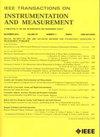Sensitivity Calibration of Triaxial High-g Accelerometer Based on the Transverse Effect of Hopkinson Bar
IF 5.6
2区 工程技术
Q1 ENGINEERING, ELECTRICAL & ELECTRONIC
IEEE Transactions on Instrumentation and Measurement
Pub Date : 2025-02-13
DOI:10.1109/TIM.2025.3541659
引用次数: 0
Abstract
This article proposes a sensitivity calibration method for triaxial accelerometers, aiming to eliminate calibration errors caused by the transverse effects of the calibration device on the accelerometers. First, we establish a matrix model that relates the triaxial acceleration excitation loads to the sensor voltage sensitivity. Next, we introduce an orthogonal calibration method based on the Hopkinson bar. Using three laser Doppler velocimeters (LDVs), we simultaneously measure the 3-D orthogonal excitation acceleration at the end of the calibration device. We then calculate the impact of the transverse coupling effect between the elastic rod and the anvil on the accelerometer calibration. Finally, we perform calibration experiments on triaxial high-g accelerometers using the proposed and conventional methods. The sensitivity matrices for each method were computed using the least squares method. We evaluate the calibration accuracy using relative error and root mean square error (RMSE) metrics. The results demonstrate that the proposed orthogonal calibration method reduces the average relative error by 60.3% and the RMSE by 64.3% compared with the conventional calibration method. The proposed orthogonal calibration method achieves higher precision and better reflects the sensitivity characteristics of triaxial accelerometers.本文提出了一种三轴加速度计灵敏度校准方法,旨在消除校准装置对加速度计的横向影响所造成的校准误差。首先,我们建立了一个矩阵模型,将三轴加速度激励载荷与传感器电压灵敏度联系起来。接下来,我们介绍一种基于霍普金森杆的正交校准方法。我们使用三个激光多普勒测速仪(LDV),同时测量校准装置末端的三维正交激振加速度。然后,我们计算了弹性杆和砧之间的横向耦合效应对加速度计校准的影响。最后,我们使用提出的方法和传统方法对三轴高 g 加速计进行了校准实验。使用最小二乘法计算了每种方法的灵敏度矩阵。我们使用相对误差和均方根误差 (RMSE) 指标来评估校准精度。结果表明,与传统校准方法相比,拟议的正交校准方法将平均相对误差降低了 60.3%,均方根误差降低了 64.3%。拟议的正交校准方法实现了更高的精度,更好地反映了三轴加速度计的灵敏度特性。
本文章由计算机程序翻译,如有差异,请以英文原文为准。
求助全文
约1分钟内获得全文
求助全文
来源期刊

IEEE Transactions on Instrumentation and Measurement
工程技术-工程:电子与电气
CiteScore
9.00
自引率
23.20%
发文量
1294
审稿时长
3.9 months
期刊介绍:
Papers are sought that address innovative solutions to the development and use of electrical and electronic instruments and equipment to measure, monitor and/or record physical phenomena for the purpose of advancing measurement science, methods, functionality and applications. The scope of these papers may encompass: (1) theory, methodology, and practice of measurement; (2) design, development and evaluation of instrumentation and measurement systems and components used in generating, acquiring, conditioning and processing signals; (3) analysis, representation, display, and preservation of the information obtained from a set of measurements; and (4) scientific and technical support to establishment and maintenance of technical standards in the field of Instrumentation and Measurement.
 求助内容:
求助内容: 应助结果提醒方式:
应助结果提醒方式:


